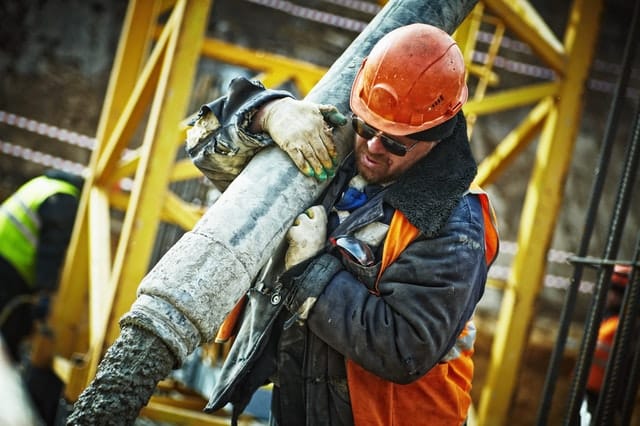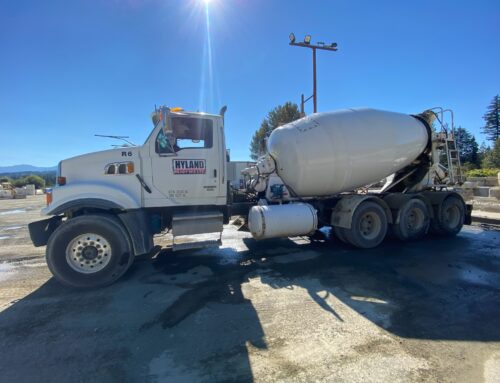Winter concrete facts and tips

Concrete can be placed safely throughout the colder months if precautions are taken. Cold weather curing is defined as a period where average daily temperatures fall below 6º C for more than three consecutive days. During colder weather in the Courtney-Comox Valley, Hyland can provide the proper ready mix mix to meet the requirements of CSA and to maintain reasonable setting times and strength gain for winter concrete projects. Keep in mind that winter concrete facts for safe and long lasting pours:
- Concrete can freeze before it gains strength which breaks up the matrix
- Concrete sets more slowly when it is cold—very slow below 50°F; below 40°F the hydration reaction basically stops and the concrete doesn’t gain strength
Water and additives help prevent concrete freezing
Unfortunately, there is no such thing as concrete antifreeze. As the temperatures outside dips to colder temperatures, Hyland heats up the water used in the concrete mix mimicking the process in summer. What helps the concrete set in winter is water, which causes the heat of hydration that prohibits freezing.
Cold weather techniques are needed when the air temperature dips below 6º C. In fact, a drop of 6º can double the time it takes concrete to set. Fortunately, temperature issues can be overcome by adjusting the mix to match the prevailing conditions.
We ensure that everything that comes into contact with our customer’s mix is heated so the concrete leaves our plant at 17º C, keeping in mind that the temperature will drop 25% of the difference between the temperatures of the air and concrete during a one-hour delivery time. From November 1 through March 15, Hyland Ready Mix heats all concrete to meet the requirements of CSA and to maintain reasonable setting times and strength gain.
Using the right recipe to help the concrete set
Another important factor in working with concrete during the colder weather months is the quality of the concrete mix itself. The right “recipe” is needed in order to ensure concrete will perform properly.
Accelerators can also be used to help it set. The best news is once the concrete is set, it cannot freeze. Accelerators can help prevent any frost damage by speeding the setting time so the curing can happen faster. By reducing the amount of water, the cement paste will have higher density, thus adding to the strength and weather-resistant qualities. We can also add accelerators to the mix to help speed up the start of finishing operations which is important in cold weather. Reducing or avoiding fly ash in the mix can also help reduce surface scaling, or peeling when exposed to deicing chemicals once the concrete is cured.
“Hyland Ready Mix Inc. would be happy to review your next winter project ensure ultimate success.” Chris Huber, Hyland Manager
Winter tips for pouring concrete
Although concrete sets more slowly when the air temperature is colder, concrete can still be quite workable if you follow these essential steps in preparing the curing site:
- Never place concrete on frozen ground, ice or snow
- Thaw the ground for a couple of days using heat pipes and blankets or electric blankets
- Triple wrap corners and protrusions
- Protect flatwork by covering and heating, or using insulated blankets, or covering with plastic and straw
- Remove standing water; bleed water needs to evaporate or be removed by a squeegee or vacuum
- Do not use a curing agent if there is any chance that the concrete will freeze during the curing period.
- Keep setting concrete covered until it is cured – consider a temporary enclosure “
- Finishing and form removal should be delayed in cool weather
Build your winter concrete projects
Whether you are a commercial contractor building a winter project, or a homeowner improving your property outdoors, the colder Vancouver Island weather doesn’t have to hold you back from working with concrete. Of course, the winter months are atypical for completing concrete projects in general, but the building doesn’t come to a halt just because the temperatures plummet outside; as the temperature does play a large role in the usability and strength of concrete. The complete standards guideline for concrete constructions is CSA A23.1-09 Section 21. Or ask one of the staff at Hyland for an overview. We are here to help you get the correct mix all year long.



